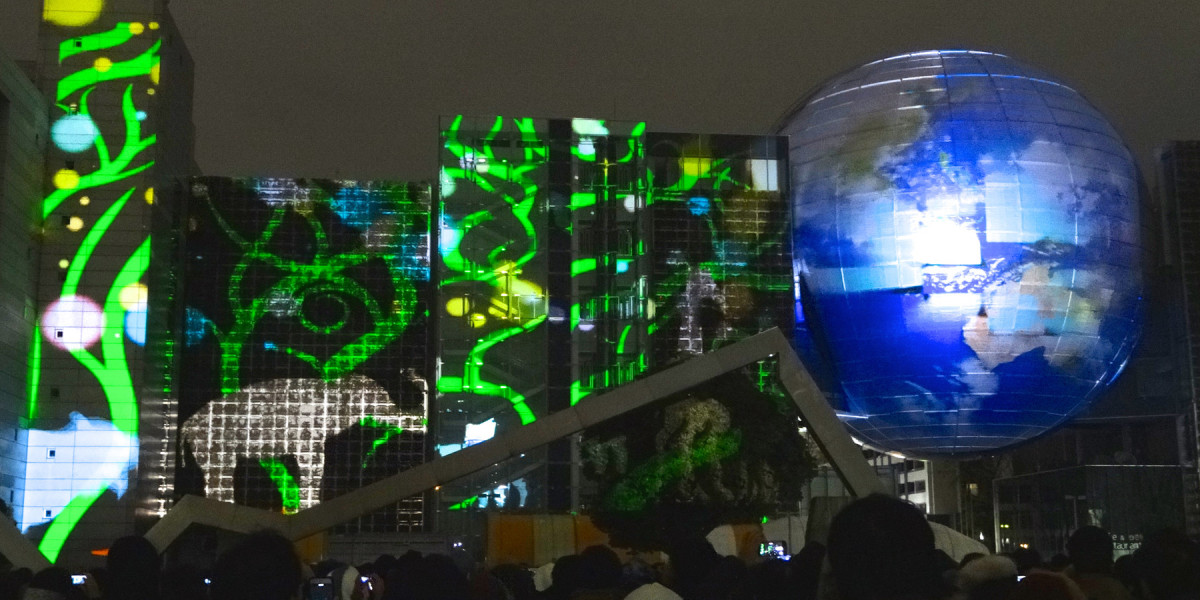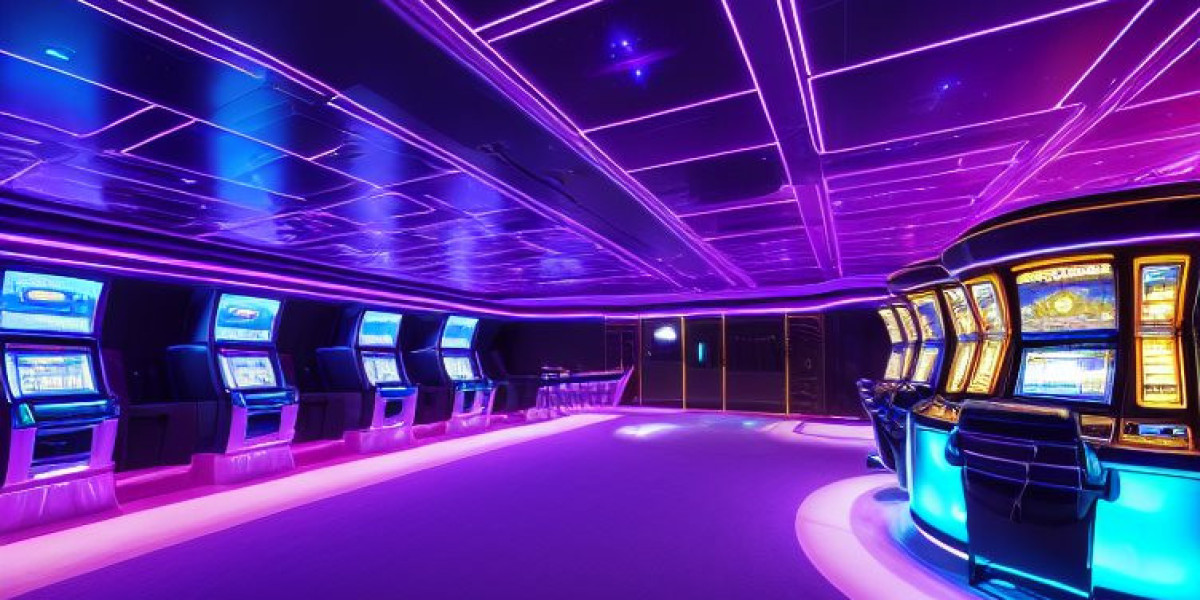Gaming has always been about pushing boundaries—visually, mentally, and emotionally. From the pixelated arcades of the 1980s to today’s high-definition virtual reality headsets, the gaming industry has consistently redefined what’s possible. Now, a groundbreaking technology is taking center stage in redefining the player experience: projection mapping.
Once reserved for art installations and stage performances, projection mapping is now infiltrating the gaming world, adding a new layer of augmented play that blurs the lines between the virtual and the physical. But what exactly is projection mapping, and how is it reshaping how we play games? Let's dive into this fascinating intersection of technology and entertainment.
What Is Projection Mapping? A Quick Overview
Projection mapping, also known as spatial augmented reality, is a technique that projects video content onto real-world 3D surfaces—buildings, objects, landscapes—turning them into interactive visual displays. Unlike traditional flat-screen projection, this technology uses 3D models and specialized software to warp and mask imagery so that it fits perfectly on irregular surfaces.
It enables any object, regardless of shape or texture, to become a digital canvas. In the context of gaming, projection mapping transforms tables, walls, and even entire rooms into interactive, game-enabled environments.
Gaming Reimagined: The Integration of Projection Mapping
1. Turning Real Spaces into Game Boards
Imagine transforming your living room table into a dynamic battlefield where spaceships soar, armies clash, and terrains shift—all without a screen or controller. Projection mapping makes this possible.
Games like "Lightform AR" and experimental projects by institutions like MIT Media Lab have begun to explore how physical surfaces can host projected gameplay. This creates an immersive mixed-reality experience where players interact with both the physical and digital world simultaneously.
Benefits:
Tactile engagement: Players can move real-world objects as part of the gameplay.
No headsets required: Unlike VR, players remain aware of their physical surroundings.
Group experiences: Encourages multiplayer interactions in shared spaces.
2. Projection-Based Augmented Reality (AR) Games
Traditional AR relies heavily on smartphones or AR glasses. However, projection mapping eliminates the need for wearable devices. The environment itself becomes the interface.
Case Study: LUMO Play
LUMO uses projection mapping to turn floors into interactive play zones for kids. From hopscotch to dance games, the projections respond to players' movements in real time using depth sensors. The result? A screenless AR experience that feels natural and immersive.
This concept is now evolving into more sophisticated gaming scenarios, where gesture-based control and AI tracking combine with projection to create seamless interactivity.
3. Immersive Role-Playing Environments
In traditional tabletop RPGs like Dungeons & Dragons, players rely on imagination and static game boards. With projection mapping, dungeons can literally come to life, shifting, glowing, and reacting as the story unfolds.
Custom-mapped projections can:
Animate terrain features (e.g., lava flows, moving rivers).
Add weather effects (rain, lightning).
Integrate real-time feedback for game master storytelling.
This adds an entirely new level of depth to role-playing games (RPGs), making each session a memorable spectacle.
4. eSports and Live Audience Engagement
eSports arenas are also exploring projection mapping to enhance the spectator experience. By mapping visuals onto the stage or audience sections, organizers create thematic environments that reflect the in-game action.
Examples include:
League of Legends World Championships, where massive projection-mapped stages elevate the competition's drama.
Overwatch League, where visuals synced with gameplay add depth to spectator storytelling.
It bridges the gap between what the players are seeing on their screens and what the audience perceives in the arena, creating a shared, cinematic experience.
5. Physical-Digital Hybrid Games
Projection mapping is enabling a genre of hybrid games, where real-world toys and digital content coexist in real time.
Example: Tilt Five AR Gaming System
Using projection and AR glasses, Tilt Five turns your tabletop into a holographic game world. While this system uses glasses, future iterations are exploring glasses-free projection mapping, making the gaming experience even more intuitive.
This has potential for:
Board game evolution: Think Monopoly or Risk with animated, 3D projections.
Educational games: Interactive learning environments that react to student behavior.
Key Technologies Behind Projection Mapping in Gaming
To make projection mapping work in gaming contexts, several technologies converge:
1. High-Lumen Projectors
Essential for bright, visible projections on various surfaces.
Short-throw projectors allow large images from short distances—perfect for small gaming spaces.
2. 3D Scanning and Surface Detection
Scanning tools (like LIDAR or depth cameras) map real-world geometry in real time.
Enables dynamic adjustments as objects or players move.
3. Real-Time Graphics Engines
Platforms like Unity and Unreal Engine can process complex visual data instantly.
Combined with motion tracking, they allow seamless player interaction.
4. Motion and Gesture Sensors
Kinect, Leap Motion, and IR sensors detect player movement.
Allows players to interact without touching controllers.
5. AI and Spatial Computing
AI predicts user behavior and adjusts projections accordingly.
Ensures fluid gameplay across multiple players and sessions.
Challenges in Projection Mapping for Gaming
While the potential is exciting, the technology still faces some hurdles:
Cost and Accessibility
High-quality projectors and tracking systems are expensive.
Mass-market adoption requires cost-effective consumer solutions.
Lighting Conditions
Ambient light can interfere with projection visibility.
Gaming rooms often need to be dimmed or specially designed.
Calibration Complexity
Accurate mapping requires careful calibration.
Misalignment can break immersion or confuse players.
Hardware Integration
Coordinating projectors, sensors, and game engines can be technically challenging.
Plug-and-play solutions are still in development.
Despite these issues, rapid advancements in compact projectors, cloud-based software, and smart tracking are making the technology more user-friendly.
Future Trends: What’s Next for Projection Mapping in Gaming?
1. AI-Driven Dynamic Environments
Future games could analyze player mood, skill, or decision-making in real time.
Projection environments would shift accordingly—e.g., difficulty, visual theme.
2. Mobile Projection Units
Pocket-sized projectors could make augmented gaming portable.
Imagine playing a strategy game on a hotel table during travel.
3. Integration with Smart Homes
Smart lighting, projection, and gaming could merge into a single system.
Voice-controlled game environments through assistants like Alexa.
4. Virtual Meetups in Physical Worlds
Projection mapping can enable mixed-reality multiplayer experiences.
Play with friends around the world in a shared, physical-digital hybrid space.
Conclusion: A New Chapter in Gaming Begins
Projection mapping is no longer just a visual spectacle for concerts and theme parks—it’s becoming the next frontier in gaming. By transforming physical spaces into dynamic digital playgrounds, it’s making gaming more immersive, social, and engaging than ever before. As technology becomes more affordable and accessible, we can expect this trend to redefine how we interact with games—not through screens or headsets, but through our surroundings themselves.
At Scale Up Spaces, we’re passionate about exploring the limitless potential of projection mapping to enrich real-world environments—including those dedicated to gaming. Whether you’re designing a futuristic game room, launching an interactive event, or building immersive installations, our team is here to help bring your augmented vision to life.








